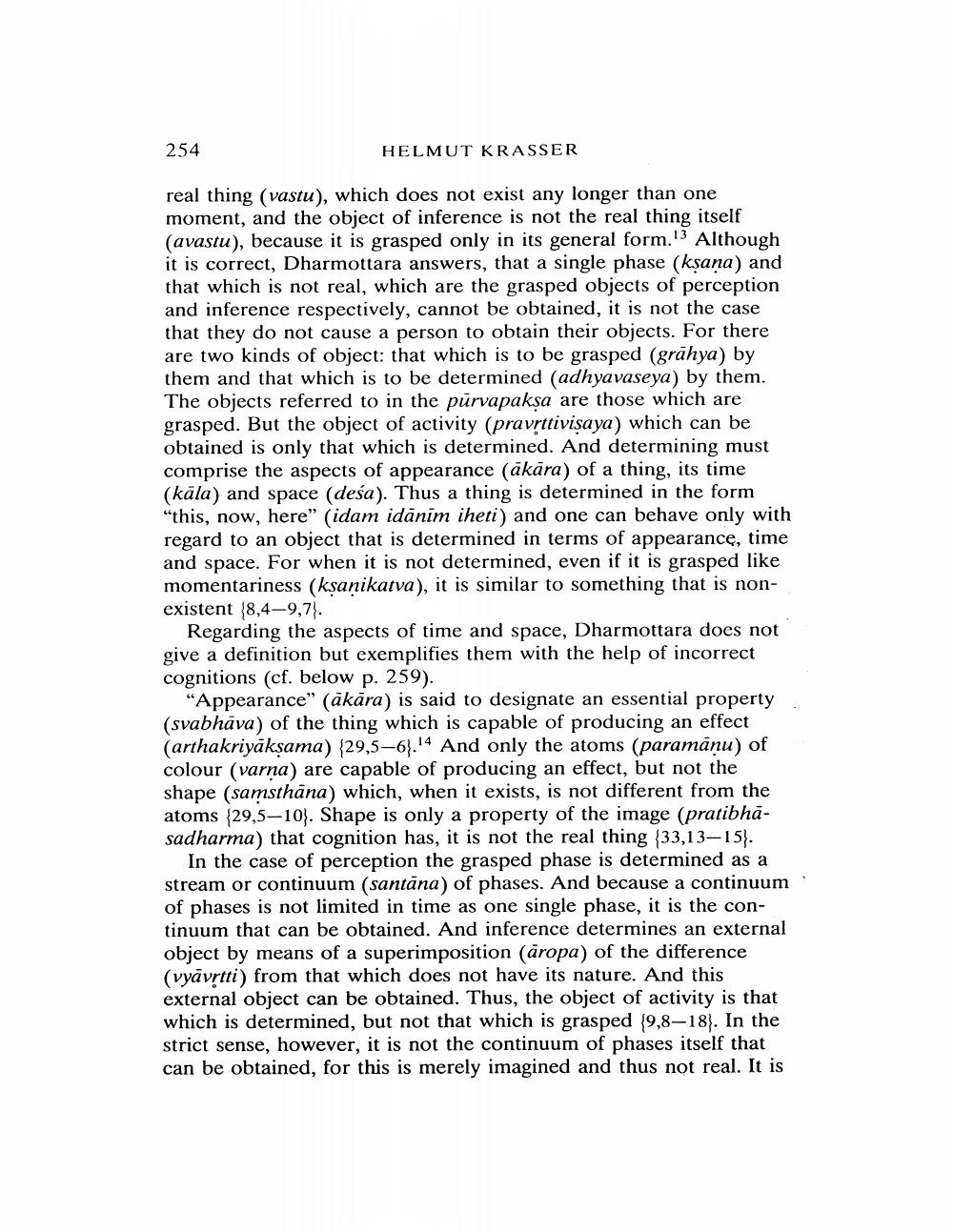Book Title: Dharmottaras Theory Of Knowledge In His Laghupramanyapariksa Author(s): Helmut Krasser Publisher: Helmut Krasser View full book textPage 8
________________ 254 HELMUT KRASSER real thing (vastu), which does not exist any longer than one moment, and the object of inference is not the real thing itself (avastu), because it is grasped only in its general form.13 Although it is correct, Dharmottara answers, that a single phase (ksana) and that which is not real, which are the grasped objects of perception and inference respectively, cannot be obtained, it is not the case that they do not cause a person to obtain their objects. For there are two kinds of object: that which is to be grasped (grahya) by them and that which is to be determined (adhyavaseya) by them. The objects referred to in the pūrvapaksa are those which are grasped. But the object of activity (pravrttivisaya) which can be obtained is only that which is determined. And determining must comprise the aspects of appearance (akāra) of a thing, its time (kāla) and space (deśa). Thus a thing is determined in the form "this, now, here" (idam idānim iheti) and one can behave only with regard to an object that is determined in terms of appearance, time and space. For when it is not determined, even if it is grasped like momentariness (kșanikatva), it is similar to something that is nonexistent (8,4-9,7). Regarding the aspects of time and space, Dharmottara does not give a definition but exemplifies them with the help of incorrect cognitions (cf. below p. 259). "Appearance" (akāra) is said to designate an essential property (svabhāva) of the thing which is capable of producing an effect (arthakriyākşama) (29,5–6).14 And only the atoms (paramānu) of colour (varna) are capable of producing an effect, but not the shape (samsthāna) which, when it exists, is not different from the atoms (29,5–103. Shape is only a property of the image (pratibhāsadharma) that cognition has, it is not the real thing {33,13—15). In the case of perception the grasped phase is determined as a stream or continuum (santāna) of phases. And because a continuum of phases is not limited in time as one single phase, it is the continuum that can be obtained. And inference determines an external object by means of a superimposition (āropa) of the difference (vyavrtti) from that which does not have its nature. And this external object can be obtained. Thus, the object of activity is that which is determined, but not that which is grasped (9,8-18). In the strict sense, however, it is not the continuum of phases itself that can be obtained, for this is merely imagined and thus not real. It isPage Navigation
1 ... 6 7 8 9 10 11 12 13 14 15 16 17 18 19 20 21 22 23 24 25
